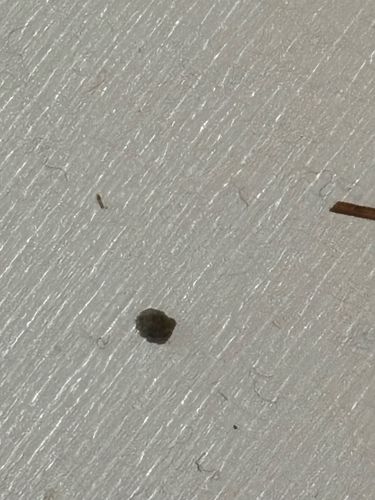Carpet Beetle Larva (likely Black Carpet Beetle or Varied Carpet Beetle)
Scientific Name: Dermestes ater (Black Carpet Beetle) or Anthrenus verbasci (Varied Carpet Beetle) are common examples. Exact species identification is difficult without more detailed morphological features.
Order & Family: Order: Coleoptera, Family: Dermestidae
Size: Larvae typically range from 2-5 mm (0.08-0.2 inches) in length, varying by species and developmental stage. Adults are usually 2-4 mm.

Natural Habitat
Indoors: Carpets, rugs, upholstered furniture, closets, attics, storage areas, around baseboards, and in areas where lint, pet hair, or food debris accumulates. Outdoors: Nests of birds, rodents, and insects, as well as dead animals and plants.
Diet & Feeding
Larvae feed on a wide variety of animal products and natural fibers including wool, fur, feathers, silk, leather, museum specimens, dried food products, and even pet hair and lint. They are scavengers. Adult carpet beetles feed on pollen and nectar.
Behavior Patterns
Larvae of carpet beetles are often found in dark, undisturbed areas. They are known for their slow movement and a tendency to curl up when disturbed. Adults are winged and can fly, often attracted to light, though they generally prefer to live outdoors and feed on pollen and nectar. They undergo complete metamorphosis.
Risks & Benefits
Risks: Carpet beetle larvae are common household pests that can cause significant damage to natural fibers, textiles, and stored food products. They are not known to bite humans or transmit diseases, but some individuals might experience allergic reactions to their shed skins or hairs. Benefits: In nature, they play a beneficial role as decomposers, helping to break down organic matter in ecosystems.
Identified on: 8/29/2025